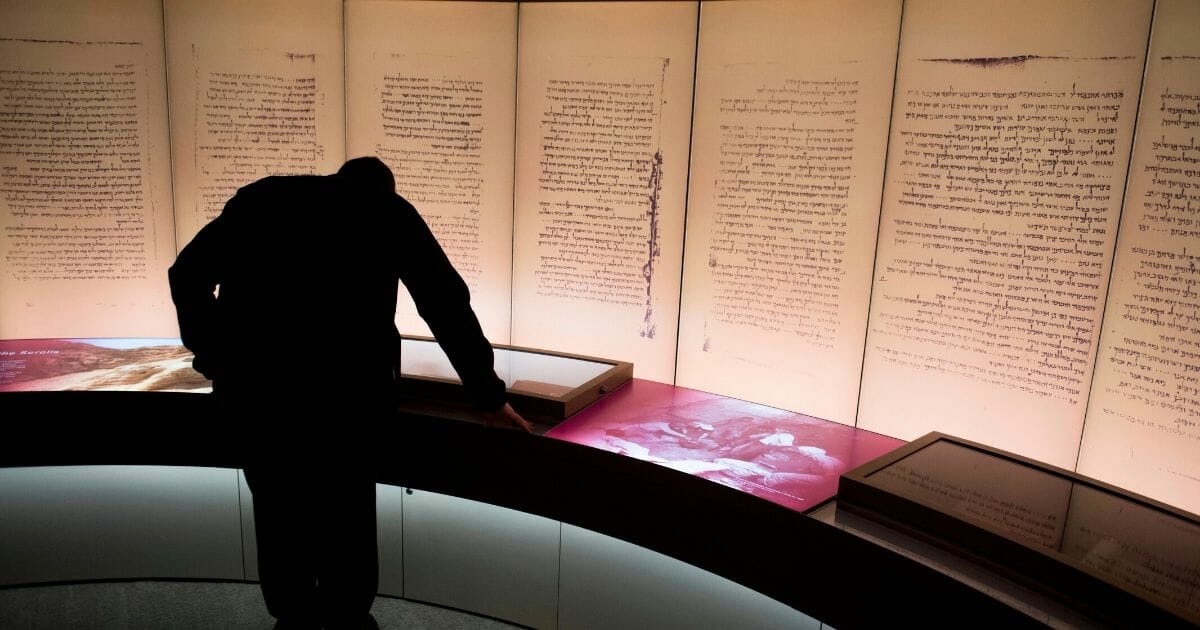
All of DC Museum's Dead Sea Scrolls Are Fake: Made with 'Intent To Deceive'
Dead Sea Scroll fragments that have been displayed in the Museum of the Bible in Washington, D.C., are forgeries, the museum announced this week.
Officials with the museum said Friday in a news release that a team of researchers ran a battery of tests on 16 Dead Sea Scrolls fragments to determine their authenticity.
“After an exhaustive review of all the imaging and scientific analysis results, it is evident that none of the textual fragments in Museum of the Bible’s Dead Sea Scroll collection are authentic,” said Colette Loll, who is the director of a company called Art Fraud Insights, LLC.
“Moreover, each exhibits characteristics that suggest they are deliberate forgeries created in the twentieth century with the intent to mimic authentic Dead Sea Scroll fragments,” Loll concluded in her company’s report on the matter.
There was almost certainly nefarious intent behind the forgeries, according to Loll. “These fragments were manipulated with the intent to deceive,” she said.
Dr. Jeffrey Kloha, the chief curatorial officer for the Museum of the Bible, praised the museum’s transparency relating to the discovery of the forgeries.
“The sophisticated and costly methods employed to discover the truth about our collection could be used to shed light on other suspicious fragments and perhaps even be effective in uncovering who is responsible for these forgeries,” Kloha said.
Loll echoed Kloha’s sentiments, praising the museum and saying the discovery could help in the analysis of suspected forgeries of the Dead Sea Scrolls in other locations.
“What Museum of the Bible is doing is extremely important in the museum world,” Loll said. “Usually, items that are determined to be fake are quietly removed from display and transferred to the euphemistic ‘study collection.’ Museum of the Bible has opted to be as transparent as possible with its collection of Dead Sea Scrolls – from the interim gallery labels, to the public announcement of the results of the research and the subsequent release of all of the associated research materials.
“This data can now be used for comparison to other questioned fragments. What a tremendous contribution to the field,” Loll added.
According to the museum’s news release, the fragments were questioned after they “exhibited characteristics ‘inconsistent with ancient origins.’”
Five of the fragments were previously deemed to be inauthentic following an investigation that concluded in 2018. They were taken off display at the time.
According to National Geographic, the forgeries do not cast any doubt on authenticity of the more than 100,000 scroll fragments found prior to 2002, when a series of new fragments flooded the antiquities market.
“Once one or two of the fragments were fake, you know all of them probably are, because they come from the same sources, and they look basically the same,” Arstein Justnes, a researcher at Norway’s University of Agder, told National Geographic.
The museum is now reevaluating other artifacts in its collection and plans to to reorganize its Dead Sea Scrolls exhibit to show how its scroll fragments were proven to be forgeries.
The Museum of the Bible announced Friday it would hold a weekend conference regarding its investigation into the fragments, but that conference was postponed Saturday due to concerns about the spread of the coronavirus.
“The March 15, 2020 Dead Sea Scroll conference has been postponed due to the public health situation,” the news release stated.
The museum will be open throughout the weekend, but will be closed beginning on Monday.
The Dead Sea Scrolls are ancient manuscripts containing the oldest known copies of Biblical text that were first unearthed between 1947 and 1956 in nearly a dozen caves at Khirbet Qumran, just east of Jerusalem in what is now the West Bank on the shores of the Dead Sea.
“They are approximately two thousand years old, dating from the third century BCE to the first century CE. Most of the scrolls were written in Hebrew, with a smaller number in Aramaic or Greek,” according to the Israel Museum, Jerusalem.
“Most of them were written on parchment, with the exception of a few written on papyrus. The vast majority of the scrolls survived as fragments — only a handful were found intact. Nevertheless, scholars have managed to reconstruct from these fragments approximately 950 different manuscripts of various lengths,” the museum says.
Truth and Accuracy
We are committed to truth and accuracy in all of our journalism. Read our editorial standards.
Advertise with The Western Journal and reach millions of highly engaged readers, while supporting our work. Advertise Today.












